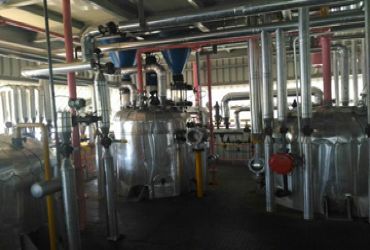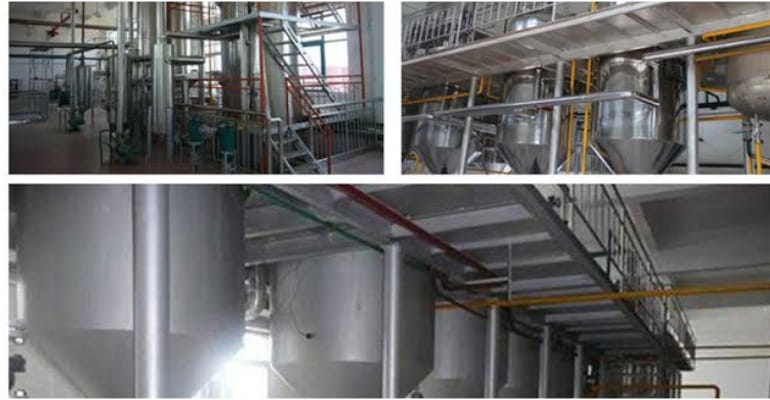Deacidification Plant:
A de-acidification plant is a facility used in the edible oil industry to reduce the acidity of vegetable oils. Here's how it typically works:
1. Neutralization :
The first step in the de-acidification process involves neutralizing the free fatty acids present in the oil. This is usually done by adding an alkaline substance, such as sodium hydroxide (caustic soda), potassium hydroxide, or sodium carbonate, to the oil. The alkaline substance reacts with the free fatty acids to form soap, which can be separated from the oil.
2. Separation :
After neutralization, the oil is allowed to settle in tanks to separate the soap and other impurities from the oil. This separation can be enhanced using centrifugal separators or other separation techniques.
3. Washing :
The oil may undergo a washing process to remove any residual soap and impurities. Water is typically used for this purpose, and the oil-water mixture is separated using centrifugal force.
4. Drying:
The oil is then dried to remove any remaining water content. This can be achieved through heating or vacuum drying methods.
5. Quality Control :
The de-acidified oil undergoes quality control checks to ensure that it meets the required standards for acidity levels and other parameters.
6. Packaging and Storage :
Once the de-acidification process is complete and the oil has passed quality control checks, it is packaged into containers such as drums, totes, or tanks, and stored in suitable conditions until it is ready for distribution.
Overall, a de-acidification plant plays a crucial role in the edible oil industry by reducing the acidity of vegetable oils, improving their quality, and making them suitable for use in various food applications.
- Great Technology
- Certified Engineers
- Delivery Ontime
- Best Branding

Specific features of De-Acidification plant for Higher FFA Oils :
A de-acidification plant for higher Free Fatty Acid (FFA) oils, such as those from palm oil or certain waste oils, may require additional features to effectively neutralize and treat the high acidity levels. Some specific features for such plants could include:


